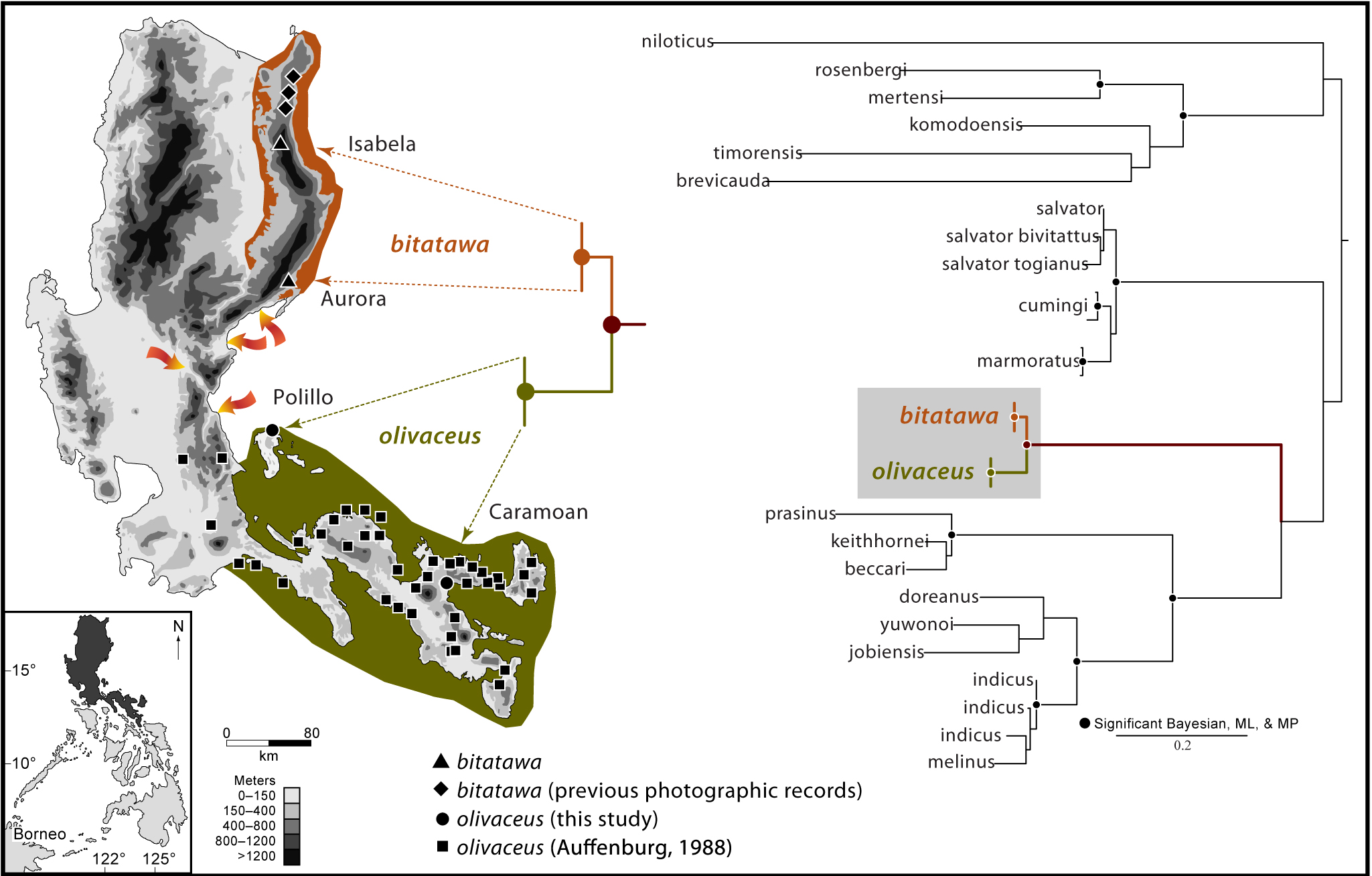New Fruit-eating Varanus Discovered in Philippines

While new species are always being discovered, it is very uncommon to discover a completely new species of large-bodied vertebrates. Most large vertebrates have been discovered because there are so few places for them to remain hidden, with all the exploration that people and scientists have performed. Every year, there are fewer and fewer uncharted regions. Because it is so difficult for a large species to remain hidden in its habitat, they are usually well known to people. However, this paper describes the discovery of a species of monitor lizard that was previously unknown to scientists.
Monitor lizards can be found throughout the tropic regions of the Old World. They live in many different habitats and can be many different sizes, from less than 25 centimeters to over three meters long. Varanus bitatawa was discovered in the unexplored forests of northern Luzon Island in the Philippines. It is a brightly colored, two-meter long monitor lizard with distinct characteristics from its closest relatives. Its combination of a large body, black and yellow coloration, dark throat coloration in juveniles, slit-like nostrils, along with other characteristics differentiate it from similar monitor lizard species. Additionally, genetic testing revealed a divergence in mitochondrial and nuclear gene sequences. All of these differences between Varanus bitatawa and other monitor lizards led to its classification as a new species.
This species’ closest relative, Varanus olivaceus, is over 150 km away, isolated by three non-forested river valleys. These act as a barrier for migration, which eventually led to genetic and morphological divergence. The hypothesized theory of isolation is consistent with the distributions of the two species on either side of these valleys, their high levels of genetic divergence, and the morphological differentiation between them. Additional findings suggest that this Mid-Sierra Filter Zone have had a similar affect on other species, suggesting that this is in fact what led to the speciation.
It is surprising that this species was only just discovered, but there are several possible reasons why it was not known earlier. There have been few surveys characterizing the biodiversity of the forests of Sierra Madre, despite it being a conservation area. The lizard is also highly secretive, and does not often leave the forest to travel through open areas. However, this new discovery has caused this region to be recognized once again as an important site for conservation and further exploration.
— Matthew DeRuyter
Welton, L.J., C.D. Siler, D. Bennett, A. Diesmos, M.R. Duya, R. Dugay, E.L. Rico, M. V. Weerd, and R.M. Brown. 2010. A spectacular new Philippine monitor lizard reveals a hidden biogeographic boundary and a novel flagship species for conservation. Biology Letters 6: 654–658. pdf supp. mat.
